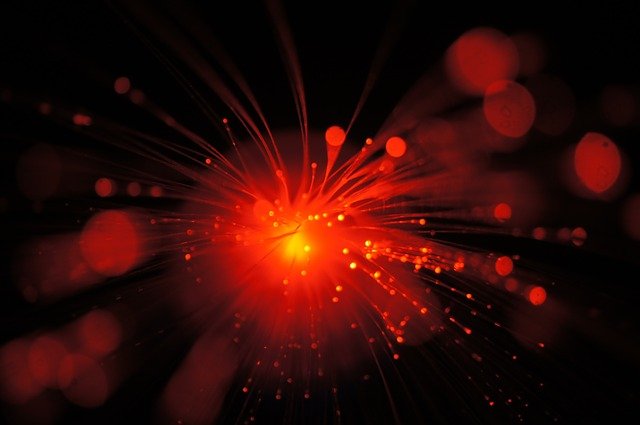 If you have been into the office lately for a treatment, you may have noticed a big red light therapy panel on top of the bookcase shining red light down onto the tilting table you lay upon while I adjust you. What is this all about? The simple answer is that red light is nutrition for the human body. Throughout human history, we have always had regular exposure to red light because we have always spent significant amounts of time outside while the sun was shining. Additionally, we would get lovely amounts of red light exposure from sitting around a fire trying to keep warm. Up until recent times, we even got red light exposure from incandescent light bulbs. But with the demands for more time spent indoors during work and now avoiding activity around others due to covid fears, our natural sunlight exposure has diminished greatly. Additionally, we have been replacing our incandescent light bulbs with more energy-efficient LED and fluorescent light bulbs. Even our computer screens tend towards high levels of blue light emission and poor levels of red light emission. This is even more significant for the biologically valuable invisible wavelengths of the infrared band. Computers have none of these wavelengths (750-900nm).
If you have been into the office lately for a treatment, you may have noticed a big red light therapy panel on top of the bookcase shining red light down onto the tilting table you lay upon while I adjust you. What is this all about? The simple answer is that red light is nutrition for the human body. Throughout human history, we have always had regular exposure to red light because we have always spent significant amounts of time outside while the sun was shining. Additionally, we would get lovely amounts of red light exposure from sitting around a fire trying to keep warm. Up until recent times, we even got red light exposure from incandescent light bulbs. But with the demands for more time spent indoors during work and now avoiding activity around others due to covid fears, our natural sunlight exposure has diminished greatly. Additionally, we have been replacing our incandescent light bulbs with more energy-efficient LED and fluorescent light bulbs. Even our computer screens tend towards high levels of blue light emission and poor levels of red light emission. This is even more significant for the biologically valuable invisible wavelengths of the infrared band. Computers have none of these wavelengths (750-900nm).
 So there you have it. We have, as a society, been eliminating the natural availability of the deep red and infrared light exposure in our lives. The question is, does this matter? What do we use red light for in the body? How does it benefit us? The answer to this question is an area of intense scientific study. There has been lots of research done on how light affects us, particularly the skin. A lot of impacts were observed and the biological mechanisms behind these impacts are just now starting to be understood. The classic line at the end of every published research article I read is “more research will need to be done.” I believe this is now a standard line in articles that really means “give us more money so we can pay our rent and keep us busy writing more research papers.”
So there you have it. We have, as a society, been eliminating the natural availability of the deep red and infrared light exposure in our lives. The question is, does this matter? What do we use red light for in the body? How does it benefit us? The answer to this question is an area of intense scientific study. There has been lots of research done on how light affects us, particularly the skin. A lot of impacts were observed and the biological mechanisms behind these impacts are just now starting to be understood. The classic line at the end of every published research article I read is “more research will need to be done.” I believe this is now a standard line in articles that really means “give us more money so we can pay our rent and keep us busy writing more research papers.”
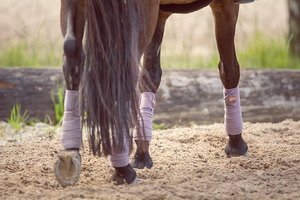 What positive findings have researchers found and what do they believe is happening? My first exposure to light therapy was over 30 years ago when I was hearing about Veterinarians at the Vet teaching hospital at UC Davis using red lasers on leg wounds on horses to speed the healing. Quite a number of research articles came out on this a few years later. Back then they were using red lasers on the belief that there was something magical about lasers. Since then it has been proven that laser light is not special as it scatters into normal light within the first millimeter of skin penetration. The important point here is that red light does indeed speed the healing of wounds in skin, tendon, and muscle
What positive findings have researchers found and what do they believe is happening? My first exposure to light therapy was over 30 years ago when I was hearing about Veterinarians at the Vet teaching hospital at UC Davis using red lasers on leg wounds on horses to speed the healing. Quite a number of research articles came out on this a few years later. Back then they were using red lasers on the belief that there was something magical about lasers. Since then it has been proven that laser light is not special as it scatters into normal light within the first millimeter of skin penetration. The important point here is that red light does indeed speed the healing of wounds in skin, tendon, and muscle
 Scientists, being the creatures they are when they observe something working, want to know how and why it works. This is still being researched, but we do have some solid answers to some of what is going on. If you remember back in high school biology, they talked about how the little power factories in each cell, the mitochondria, use a process called the Krebs cycle to form the basic energy molecule of the body; ATP. This process involves lots of steps that pull out little bits of energy at each step by forming these ATP molecules. Part of what researchers have found is that certain wavelengths of light speed up and facilitate certain steps in this process allowing the mitochondria to form more ATP than they otherwise could. More ATP means more energy to build replacement proteins, clean out waste, and ultimately rebuild the health of the cells. Simply put, red light therapy rejuvenates the cells. This has all sorts of benefits for different areas of the body.
Scientists, being the creatures they are when they observe something working, want to know how and why it works. This is still being researched, but we do have some solid answers to some of what is going on. If you remember back in high school biology, they talked about how the little power factories in each cell, the mitochondria, use a process called the Krebs cycle to form the basic energy molecule of the body; ATP. This process involves lots of steps that pull out little bits of energy at each step by forming these ATP molecules. Part of what researchers have found is that certain wavelengths of light speed up and facilitate certain steps in this process allowing the mitochondria to form more ATP than they otherwise could. More ATP means more energy to build replacement proteins, clean out waste, and ultimately rebuild the health of the cells. Simply put, red light therapy rejuvenates the cells. This has all sorts of benefits for different areas of the body.
Skin Health
increases collagen production in the skin
improves skin elasticity, tone, and firmness
decreases the appearance of lines and wrinkles
promotes tissue healing – anti-aging – rejuvenation
improves circulation and protects blood cells
stimulates fibroblasts and stem cells in the skin
decreases scars and stretch marks
Reducing Inflammation
accelerates muscle repair
soothes sore muscles, joint pain, and arthritis
reduces skin autoimmune reactions
eases joint stiffness and soreness
reduces recovery time – promotes wound healing
Other benefits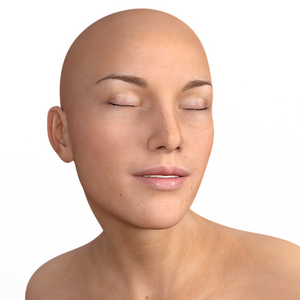
stimulates hair growth and follicle stem cells
reduces muscle spasms
improves cognition in dementia patients
speeds facial bone healing
improves macular degeneration
possibly helps PTSD and traumatic brain injury
generates exclusion zone water interfaces for the cells
causes release of fat from fat cells
 The list of all the things red light therapy can treat is very long because lots of people have tried it on lots of things clinically and gotten positive results. But there is still a ton of controlled research that needs to be done to validate these results and work still has to be done to find optimal wavelengths and treatment times. Like so many things in the body, light has a u-shaped response curve – sometimes referred to as the Goldilock’s curve. That means that there is a sweet spot for how intense the treatment light needs to be and how long you need to treat to get any effective results. Too little time or intensity and you get no results, plus too much time or intensity and your benefits are neutralized. Nothing in the body works on the more-is-better principle.
The list of all the things red light therapy can treat is very long because lots of people have tried it on lots of things clinically and gotten positive results. But there is still a ton of controlled research that needs to be done to validate these results and work still has to be done to find optimal wavelengths and treatment times. Like so many things in the body, light has a u-shaped response curve – sometimes referred to as the Goldilock’s curve. That means that there is a sweet spot for how intense the treatment light needs to be and how long you need to treat to get any effective results. Too little time or intensity and you get no results, plus too much time or intensity and your benefits are neutralized. Nothing in the body works on the more-is-better principle.
 Ellen and I use red light therapy every day. I will use my red light device to generally illuminate the room each morning while we exercise plus I do a 3-minute close-up treatment of my eyes to prevent macular degeneration. (For some unknown reason the eye benefit only works in the morning.) Each evening we sit/stand 8 to 12 inches from the light for 8 minutes on our front and back. I found some very exacting research several years ago that told me exactly what intensity of light my skin cells could use productively. By using a special type of light meter, I was able to measure the output of my lightbox at different distances and then calculate the proper number of minutes of exposure.
Ellen and I use red light therapy every day. I will use my red light device to generally illuminate the room each morning while we exercise plus I do a 3-minute close-up treatment of my eyes to prevent macular degeneration. (For some unknown reason the eye benefit only works in the morning.) Each evening we sit/stand 8 to 12 inches from the light for 8 minutes on our front and back. I found some very exacting research several years ago that told me exactly what intensity of light my skin cells could use productively. By using a special type of light meter, I was able to measure the output of my lightbox at different distances and then calculate the proper number of minutes of exposure.
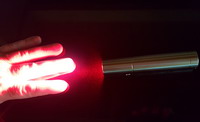 So, we go for the whole body approach with red light therapy. Focal therapy right over problem areas is also useful, like my Tendlight for treating tendon pain or a two-wavelength red spotlight for treating areas like sore knees or back pain.
So, we go for the whole body approach with red light therapy. Focal therapy right over problem areas is also useful, like my Tendlight for treating tendon pain or a two-wavelength red spotlight for treating areas like sore knees or back pain.
I searched for red light therapy in Sacramento and found that there are businesses that offer this service. The prices seemed to be a bit high by my standards, like $40 (for just the face) to $90 (for the body) per session when you sign up for 12 sessions. For the cost of a 12 session package, you could buy yourself a home treatment unit like we have and use it every day for as long as you would like. These prices are not as bad as the red light therapy some chiropractors are offering for
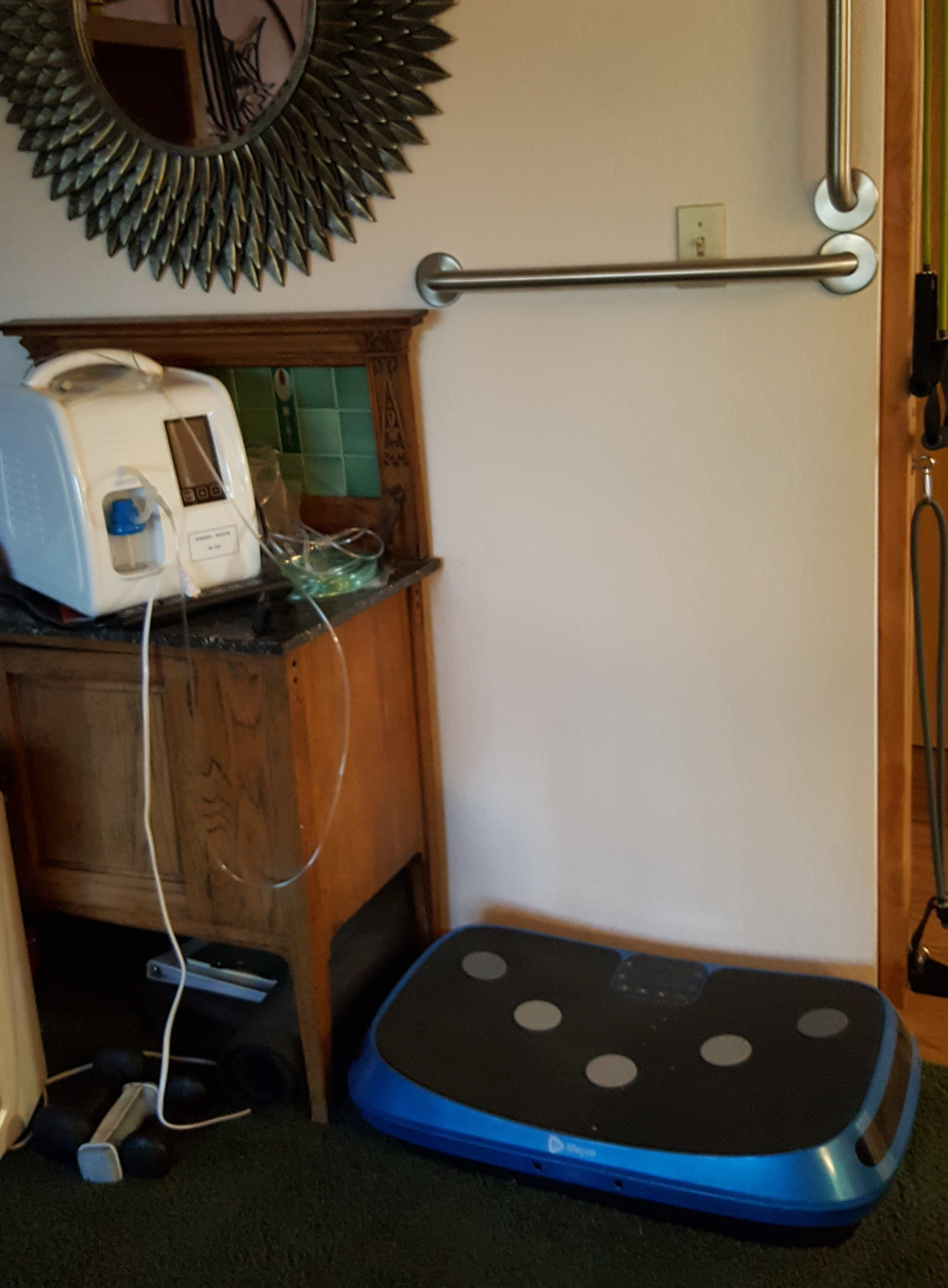
weight loss – $300 per session. I have thought of setting up a therapy area at the office, but light therapy requires you to take your clothes off so the light will reach your skin. We don’t have a good area for that at this time in the office. Actually what I thought would be really cool is a station where you stood on a vibration plate to get your lymphatics moving while breathing molecular hydrogen to eliminate inflammatory free radicals, all while getting a red light treatment for all its benefits. I could see that as highly valuable for just about everybody.
This has hopefully
 given you a taste for the wonderful world of red light therapy. There seems to be plenty of benefits to using red light and infrared light for a wide variety of conditions. As always, more research is needed.
given you a taste for the wonderful world of red light therapy. There seems to be plenty of benefits to using red light and infrared light for a wide variety of conditions. As always, more research is needed.
Take care,
David
